
The Tutto Verdi series from the Teatro Regio Parma may be said to relate to the great Giuseppe Verdi’s oeuvre as the burning of the library at Alexandria did to classical literature. I hate to use the word “provincial” over and over and over and over and over again because, frankly, it’s a colonialism. But there’s a big difference between singers who are so hammy you can feel the prosciutto squishing between their toes and performers who are just too vain and/or lazy to stay in character for the sake of the drama.
Such is the case, yet again, with this performance of Luisa Miller filmed in October of 2007 and released by our friends at C-Major.
This would be the first time Verdi would write an opera around a middle-class heroine who ends up being victimized by the higher social class surrounding her. It also finds the composer at the end of his “galley years,” still very much experimenting with form and style, with his genius about to flower into the three incomparable operas that constitute his middle period. Verdi and his librettist Salvadore Cammarano, in what was apparently a very amicable collaboration, took the trouble to shift the setting of Friedrich von Schiller’s play from Germany to a quaint village setting in the Austrian Alps to further emphasize the bucolic nature of the story and tiptoe around those pesky censors.
Which must be why stage director/set/costume/lighting designer Denis Krief gives Luisa and her father a cabin paneled with driftwood to live in, right next door to what appears to be a public art project, surrounded by a forest of video trees. (When the plot moves to the fancy people on the other side of town the abstract art project takes over completely.)
Schiller’s Sturm und Drang (literally) plot involves the operatically ubiquitous love triangle, the usurping of noble titles, assumed identity, false imprisonment, suicide, murder by poisoning and forged notes passed in homeroom. Which means it really should be much more exciting than it usually turns out to be. It’s not that people here aren’t trying it’s just that some of them need to try harder.
Conductor Donato Renzetti strolls into the pit like he’s being shown to the best table in his favorite restaurant. He tucks in and gives us a beautifully spirited and varied interpretation of the sinfonia that may actually be the highlight of the performance—because from there on in it’s a slow roll downhill for the next two hours and 47 minutes. Outside of the great tenor aria, “Quando le sere al placido” I can’t say that I find any of Verdi’s music here particularly inspiring but Renzetti deploys the Parmigiani in the pit with great skill and their playing is very consistent and he’s an excellent accompanist for this cast..
The character parts can be dispatched quickly. Katarina Nikolic as Luisa’s confident Laura looks thirty and sound sixty with her obstructed, tremulous mezzo. She’s a charming actress but every time she started singing I had to rub my eyes to make certain it was her and not an older woman standing behind her.
The Count’s dastardly minion Wurm who’s not only appropriately named but carrying a torch for Luisa that he apparently intends to use on her, is played by Rafal Siwel. He does everything but twirl his mustache in this imprudent staging and his voice is solely centered in his nasal cavity which makes for some uncomfortable listening early on when he isn’t fully warmed up..
We encounter a similar problem with Giorgio Surian as Count Walter, who spends his entire opening aria pulling faces for the sake of his technique so that he can’t convey anything to the audience dramatically unless it’s tummy trouble. Mr. Surian has had a long career and although his gravely bass voice is still in good shape he’s obviously not spent much time in class with Lee Strasberg.
The hypotenuse of the love triangle is the Duchess Frederica played by Francesca Franci. It’s a serviceable voice and nothing more and it’s a role that’s especially hard to define and make an impact in. Her brief duet with the tenor goes well but she has barely 20 minutes of stage time and she seems more a contrivance of the plot than a character involved in the action. She spends the entire evening dressed in a fire-engine red satin hunting costume with top hat and veil which she unadvisedly lifts to begin singing, thereby compromising her allure.
Leo Nucci, who plays Luisa’s father, at the time of this filming was 65 years old. He positively belts out his entrance line and I thought to myself, surely, he can’t keep this up all evening and then he does, delivering probably the strongest and most secure vocal performance I think I’ve ever heard from this baritone. He knows it, too, which is the problem. The other problem is that you have to watch him sing it as well. Between him and Surian this could be called the performance of pained expressions.
The role of Rodolfo, the Count’s son who’s wanting to marry beneath his station and make Luisa his wife, is a difficult one. I’ve read many tenors refer to the last act as being as heavy to sing as Otello. The first two acts find Marcelo Álvarez in exemplary form. He obviously enjoys singing in Parma and it’s most certainly mutual. I believe this was his third staged performance of this role and he’s in very easy and conversational voice here. He’s still breaking the line for emphasis and the “hurdy-gurdy” early Verdi style of writing doesn’t flatter his already challenged legato.
He sings a lovely romanza at the end of Act II and even adds some delicious piano markings to the repeat. For this he gets the biggest hand of the evening. His performance in the last scene is good but not great. I find the transition from loving fiancé to betrayed murderer a hard one to pull off for anyone. I think Verdi’s writing isn’t on the highest level either so I’m not necessarily blaming Mr. Álvarez who is certainly a forthright performer if ever over-emotional in that latin tenor way we all enjoy.
Which brings us to Fiorenza Cedolins as Luisa. We discover her at curtain rise about to celebrate her birthday with all the townsfolk. I don’t believe Verdi’s score mentions her age but Ms. Cedolins has been before the public for almost 20 years. She’s also reached that particular time in a soprano’s career when she’s canny enough to sing”‘at” just about anything she wants. This makes her a danger to her good reputation and the voice is beginning to fray. Luisa’s opening aria is written for a singer of not a little technical accomplishment and although she manages the staccatos her cadenza finds her skeet-shooting for high notes.
She has the weight at the bottom of her voice for some good effects and her Italian diction is exemplary but the top has developed an unfortunate oscillation that’s disconcerting. She pulls the pitch so far down in the a capella quartet in Act II that it’s just plain grisly when the orchestra comes back in.
Mr. Krief’s costumes look to be circa 1930’s and Ms. Cedolins is attractively dressed in a simple shirt waist and long skirt all evening with her hair bobbed and curly. She is a handsome woman without being overtly glamorous and she moves well on stage. The last act is really too much of a melodramatic challenge for anyone to pull off and the staging, which has her collapsing, recovering and re-collapsing, doesn’t help.
Much of the fault here can be laid at the feet of the director for blocking that’s almost completely tension-free. But, we also have singers who are walking through this performance so over concerned with their vocal technique it’s like they’re afraid they’ll disturb their coiffure—To say nothing of their eagerness to acknowledge applause. Yes, this is the provinces.
Picture and sound are very good with the requisite laying on of subtitles in all languages. Certainly for fans of any of the three leads I think this is an enjoyable performance but it’s a work that’s hard to pull off and I don’t think this release in particular will inspire any converts.














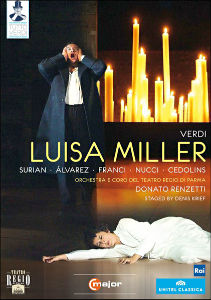
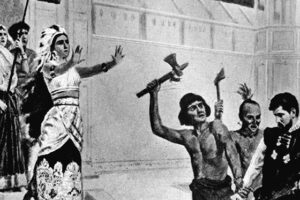
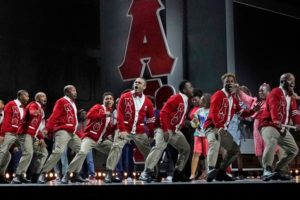
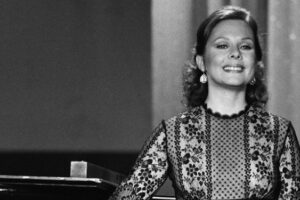
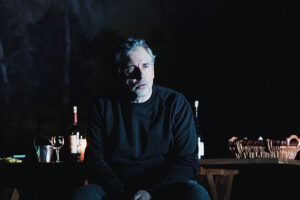





Comments